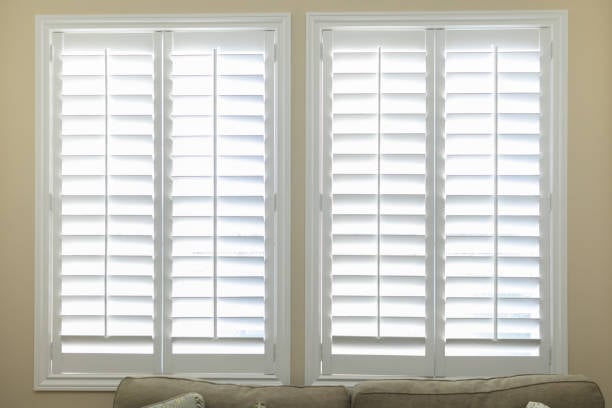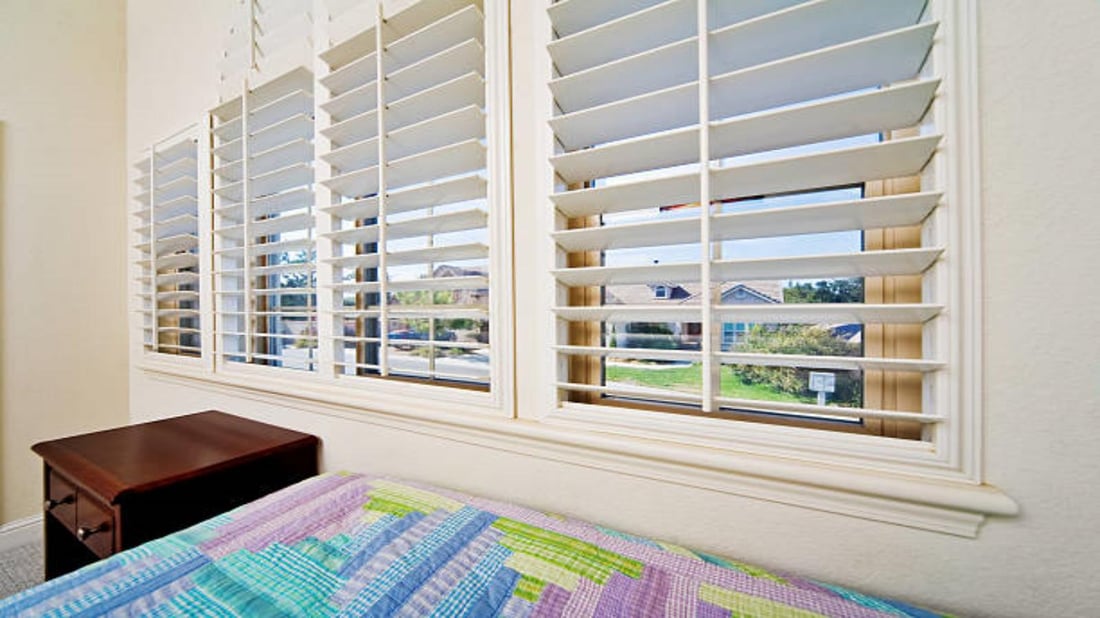When it comes to dressing your windows, the options can seem overwhelming. Among the most debated choices are shutters and blinds. In this guide, we'll delve into the nuances between shutters and blinds, explore their costs, and offer valuable tips to aid in your decision-making process. Whether you opt for shutters or blinds, both can elevate the aesthetics of your home's interior design while providing functional benefits. So, let's dive in to discover which option suits your needs best.

Understanding the Distinctions
Shutters and blinds differ significantly in their installation and material composition. Blinds are typically installed inside or above the window's recess, while shutters are affixed directly onto the window frame itself. Moreover, shutters are crafted from durable materials like wood or vinyl, offering a more permanent fixture, whereas blinds are often made from softer materials such as fabric or thin metal/plastic, providing a more temporary solution that allows for easier replacement.
Pros and Cons
Each option—shutters and blinds—comes with its own set of advantages and drawbacks:
Pros of Shutters:
- Durable and long-lasting, enhancing the longevity of your window treatments
- Enhance curb appeal and potentially increase property value
- Child-safe with no cords or chains, ideal for homes with young children
- Low maintenance, requiring minimal upkeep
- Available in various materials including vinyl, wood, PVC, and faux wood
- Sections provide precise control over light and ventilation in the room
Pros of Blinds:
- Offer a vast array of colors, styles, and designs to suit any interior decor
- Provide a softer aesthetic compared to shutters, lending a cozy ambiance to the room
- Generally more affordable than shutters, making them budget-friendly
- Easily changeable or upgradable to accommodate evolving tastes
- Options available for blackout and improved insulation, enhancing energy efficiency
Cons of Blinds:
- Require more effort to maintain cleanliness
- Fabric blinds susceptible to sun damage, bleaching, and moisture absorption
- Need replacement more frequently compared to shutters due to wear and tear
For further guidance tailored to your specific needs, it's advisable to consult local blinds and shutters specialists. They can provide expert advice on the most suitable option for your home and discuss cost estimates tailored to your preferences. Obtaining multiple quotes from reputable tradespeople is always recommended to ensure you make an informed decision.

Top Tips for Choosing Between Blinds and Shutters
Here are five essential tips to consider when deciding between blinds and shutters:
-
Consider the type of window: For large windows like bifold or French doors, opt for blinds such as Duetted blinds for a practical solution. Bespoke shutters are ideal for arched or rounded windows, maximizing their unique shape. Standard windows can accommodate both blinds and shutters effectively.
-
Assess the room: Tailor your choice based on the specific requirements of each room. For bedrooms, prioritize light-blocking features with blackout blinds. In moisture-prone areas like kitchens and bathrooms, opt for waterproof blinds or durable vinyl shutters.
-
Factor in cost: Determine your budget and weigh the costs of shutters versus blinds. Keep in mind that custom-made options will incur higher expenses compared to ready-made alternatives.
Conclusion
Choosing between shutters and blinds requires careful consideration of various factors, including functionality, aesthetics, and budget. By evaluating the differences, weighing the pros and cons, and following these practical tips, you can confidently select the ideal window treatment to enhance your home's ambiance and functionality.

